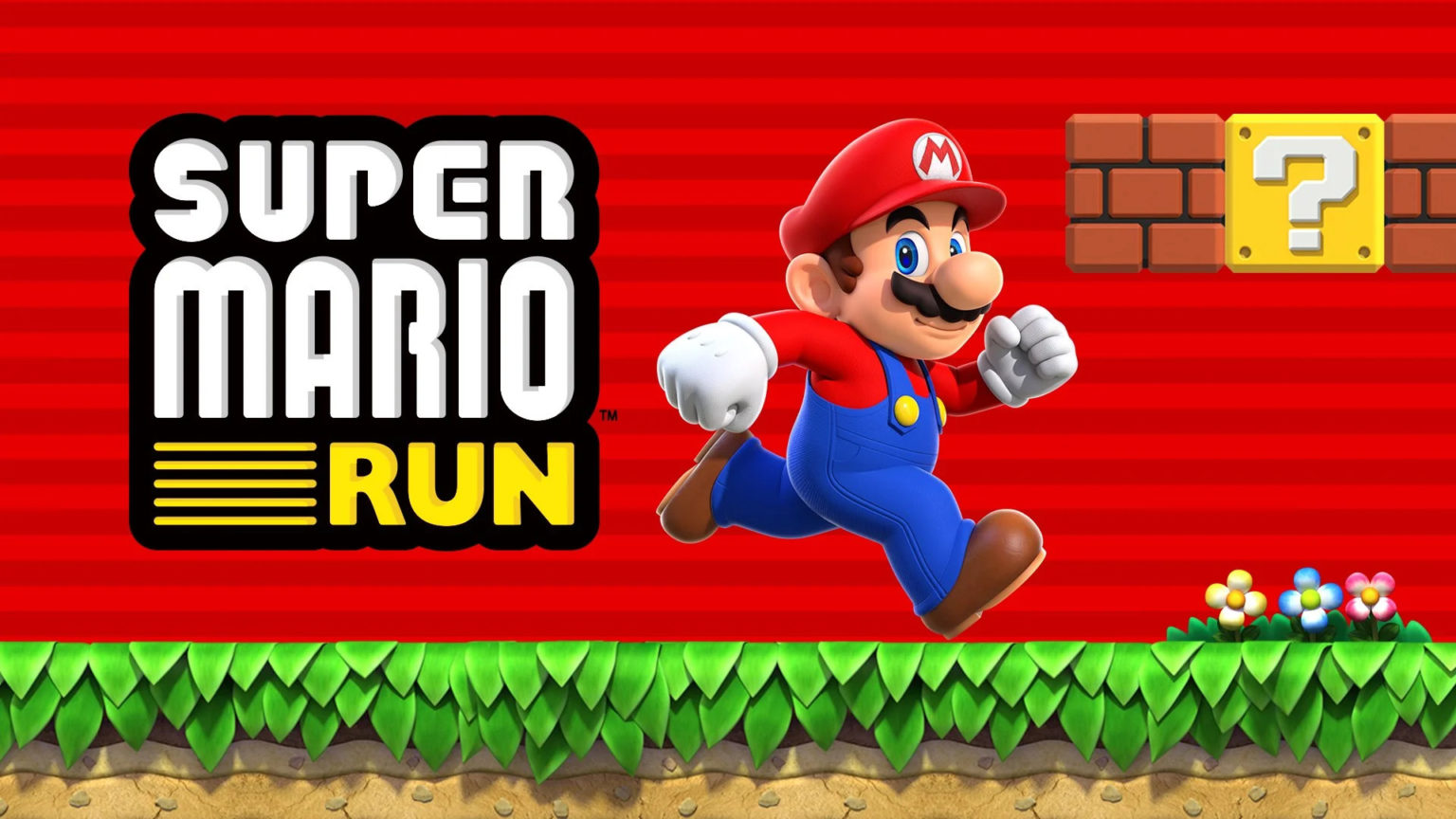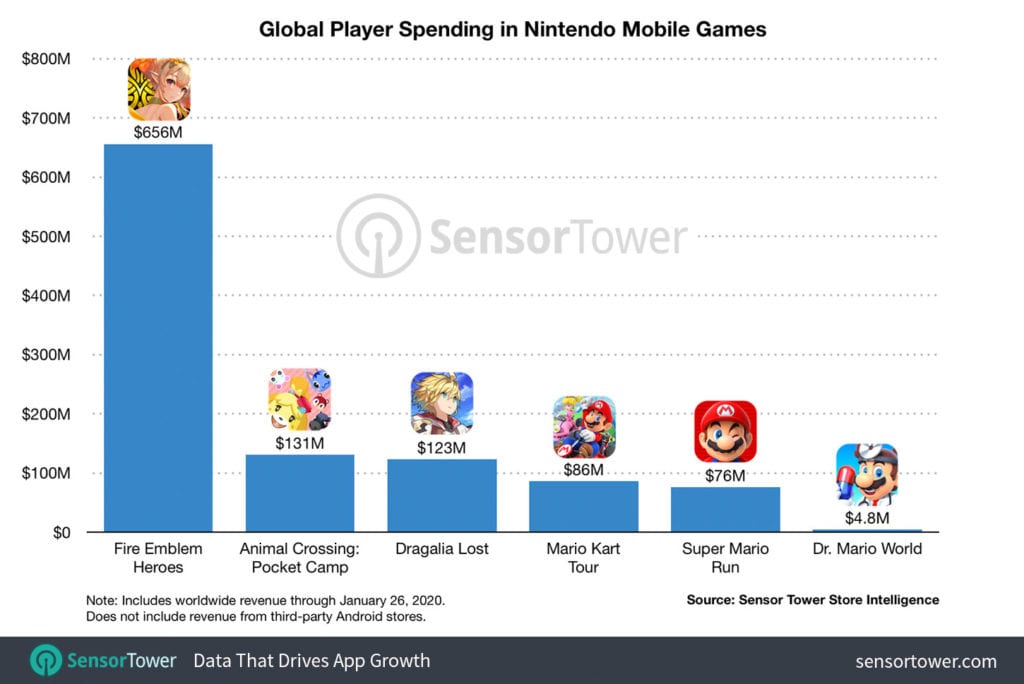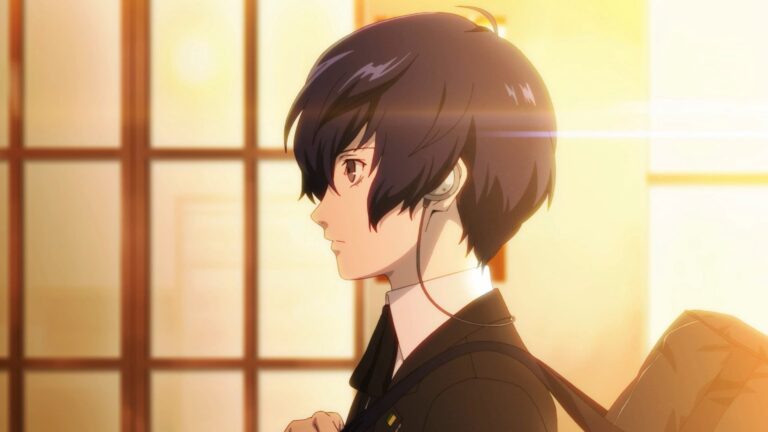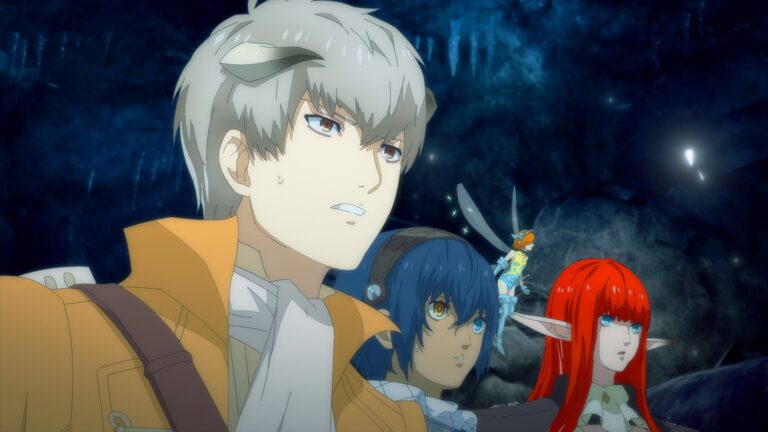Nintendo has always been known for their exclusive titles. If anyone wanted to play Super Mario, Legend of Zelda, or Animal Crossing, they would have to purchase a Nintendo console. When Nintendo first ventured into the mobile gaming scene, many fans were hopeful and excited. Finally, Nintendo’s games would be readily available to everyone who had a smartphone. However, with recent trending practices in Nintendo mobile games, that excitement is waning and could spell trouble to Nintendo Mobile’s future.
https://www.youtube.com/watch?v=Qh9ubqhtzNs
Nintendo Mobile’s Financial Success
Nintendo’s mobile games have generated over $1 billion dollars in revenue since their initial launch in 2016 with over 400 million combined downloads worldwide. Since Nintendo’s first game, Super Mario Run, they have released five more titles for mobile gaming audiences, including Mario Kart Tour, Animal Crossing: Pocket Camp, and the exponentially successful Fire Emblem Heroes.
Fire Emblem Heroes alone has generated over $656 million of Nintendo’s $1 billion revenue, outshining the rest of Nintendo’s mobile offerings. Animal Crossing: Pocket Camp and new IP Dragalia Lost have only made $131 million and $123 million in comparison. Other games like Mario Kart Tour, Super Mario Run, and Doctor Mario World have only contributed to 8%, 7%, and 1% respectively to the lifetime revenue generated. What sets these three leading games apart from the other faltering titles is the monetization system the leading titles have in place.
Nintendo Mobile’s first game, Super Mario Run, had a simple system in place. The game was free to play but after the first few levels, players would have to pay a flat fee of $9.99 to play the whole game. There were no more in-game purchases or transactions to be made after that payment was made and players would now have a full game on their hands. The game was enormously popular, especially overseas, but Nintendo was not pleased with the profit the game was turning out. The lack of microtransactions stifled any other ways for Super Mario Run to generate more money.
Fire Emblem Heroes on the other hand followed a more typical mobile game structure. Like Super Mario Run, it was free to play but was chockfull of microtransactions and designed as a “gacha” game. Gacha is Japanese term derived from capsule-toy vending machines where people spend money in hopes of rolling out a particular toy they like in the face of overwhelming odds. Gacha games replicate this by having players spending in-game and real-life currency to try “pulling” for things that they want in-game, with odds and percentages stacked heavily against them. This style is most akin to that of loot boxes in the West and is designed to induce players into spending money.
Fire Emblem’s entire game concept revolves around this gacha. At its core, Fire Emblem is a strategy RPG game that has players use characters throughout the series, dubbed Heroes, to fight enemies and clear levels. Players start off with a limited amount of Heroes at their disposal as well “Summoning Orbs,” which are the premium currency of the game used by players to “summon” for more Heroes. With these Orbs, players can try to pull for stronger and more powerful characters to use to bolster their armies. Because these pulls are randomly generated, players can spend their entire orb stash and not get what they desire, just like how it can be in capsule-toy vending machines.
Orbs are a limited commodity. If players desire more, they must purchase them through microtransactions. Inevitably, players who spend more would gain the upper hand over players who do not. This system is also in place in Animal Crossing: Pocket Camp, where players pull for furniture items at random to decorate their camps. Dragalia Lost too has a gacha system in place.
The gacha model is nothing new in the mobile gaming market. Heavyweight titles like Fate Grand Order and Final Fantasy Exvius all utilize this strategy and to great success. The gacha phenomenon revolves around players playing a game of chance and the thrill it gives when players finally get what they want. This model is not necessarily akin to gambling, where players vie for money, but the psychological thrill, rush, and addiction found in gacha is remarkably comparable.
However, gachas are not the main issue underlying Nintendo Mobile’s games. Gachas are predatory in design and meant to entice players into making purchases but many of Nintendo’s aforementioned games have a lively free-to-play (F2P) playerbase that play the game without spending a penny. These players able to do so thanks to the development teams that run and update these games. Games like Fire Emblem Heroes and Dragalia Lost are often generous to F2P players, giving them premium currency through quests and in-game events that allow them to continue playing alongside their more fiscally advantageous—or irresponsible—competitors.
The biggest issue are Nintendo’s aggressive and mismanaged subscription models.
Paywall Locked Content
Mario Kart Tour was the first Nintendo Mobile game to introduce in-game monthly subscription option. Called the Gold Pass, players could pay $4.99 to have access to more items, in-game achievements, and an entire racing mode.
This walling off of content turned many players off from the game, especially one that was laden with several issues at launch with no multiplayer readily available. Animal Crossing would soon follow Mario Kart’s footsteps and also add its own subscription plan, allowing the game to play in the player’s absence and give players access to premium currency.
The latest game to introduce an in-game subscription plan was Fire Emblem Heroes, Nintendo Mobile’ revenue flagship. Compared to the subscription prices of Animal Crossing and Mario Kart, Heroes is by far the most expensive at $9.49. Aside from its egregious price, the Feh Pass seems reasonable.
Almost.
The Pass gives subscribed players access to more in-game quests for premium currency and resources as well as cosmetic changes for certain popular characters. Many community members have stated that if the Pass ended there, they would have been enticed into purchasing it if it were cheaper. However, the Pass does not stop there. The characters that receive cosmetic changes would also receive stat boosts, giving them an edge in combat over other players would did not purchase the pass and the Pass also listed several quality-of-life upgrades that would be locked behind the Pass.
The perks being offered by the Pass allows players to rewind in-game to fix mistakes as well as have an AI grind through multiple maps without any player intervention. For a game that was as generous as Fire Emblem Heroes was to both its F2P playerbase and P2W (Pay-to-Win) playerbase, this subscription-based update felt like a huge slap in the face to the F2P community.
The community was rightfully upset, with the Fire Emblem Heroes subreddit exploding with harsh criticism and choice words at Nintendo’s decision to implement such a change despite previous actions. Every single update prior had quality-of-life changes be universal for all players, no matter how much they spent, each update designed for player convenience.
The problem was not premium currency or cosmetic changes—these were already issues players were used to dealing with in a gacha game.
The problem was locking quality-of-life changes and mechanics behind a paywall. These changes do not necessarily give players a competitive edge in-game or extra content and that is exactly why they should have been universal instead of being locked for subscription pass holders only. The Pass is seen as blatant cash grab by developers designed to have players spend money for in-game convenience. This was the same criticism that Animal Crossing: Pocket Camp faced for its Happy Helper plan.
Fire Emblem Heroes was not the first Nintendo Mobile game to bring about the subscription model and will definitely not be the last. The aggressive design behind these models is a worrying prospect for the remainder of Nintendo’s untouched mobile games and the games yet to come.
No related posts.







